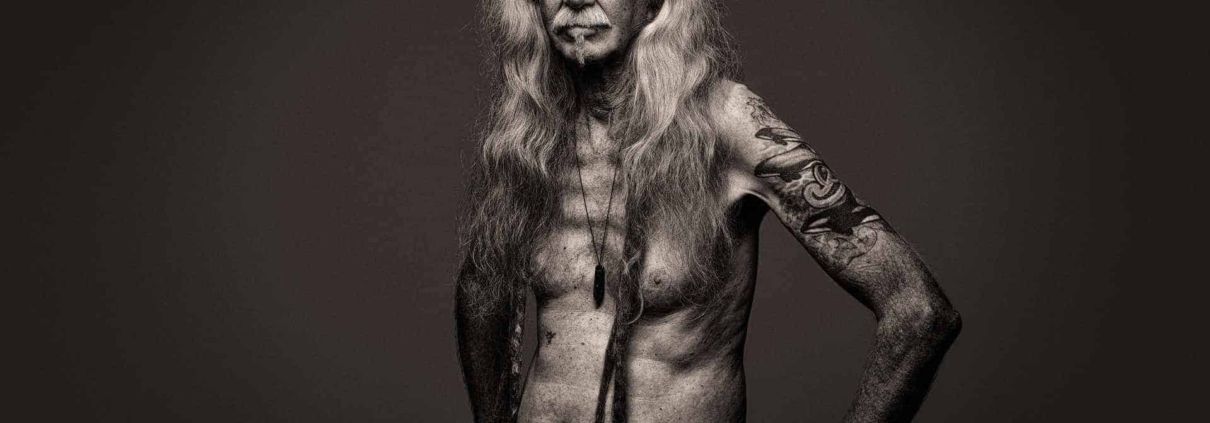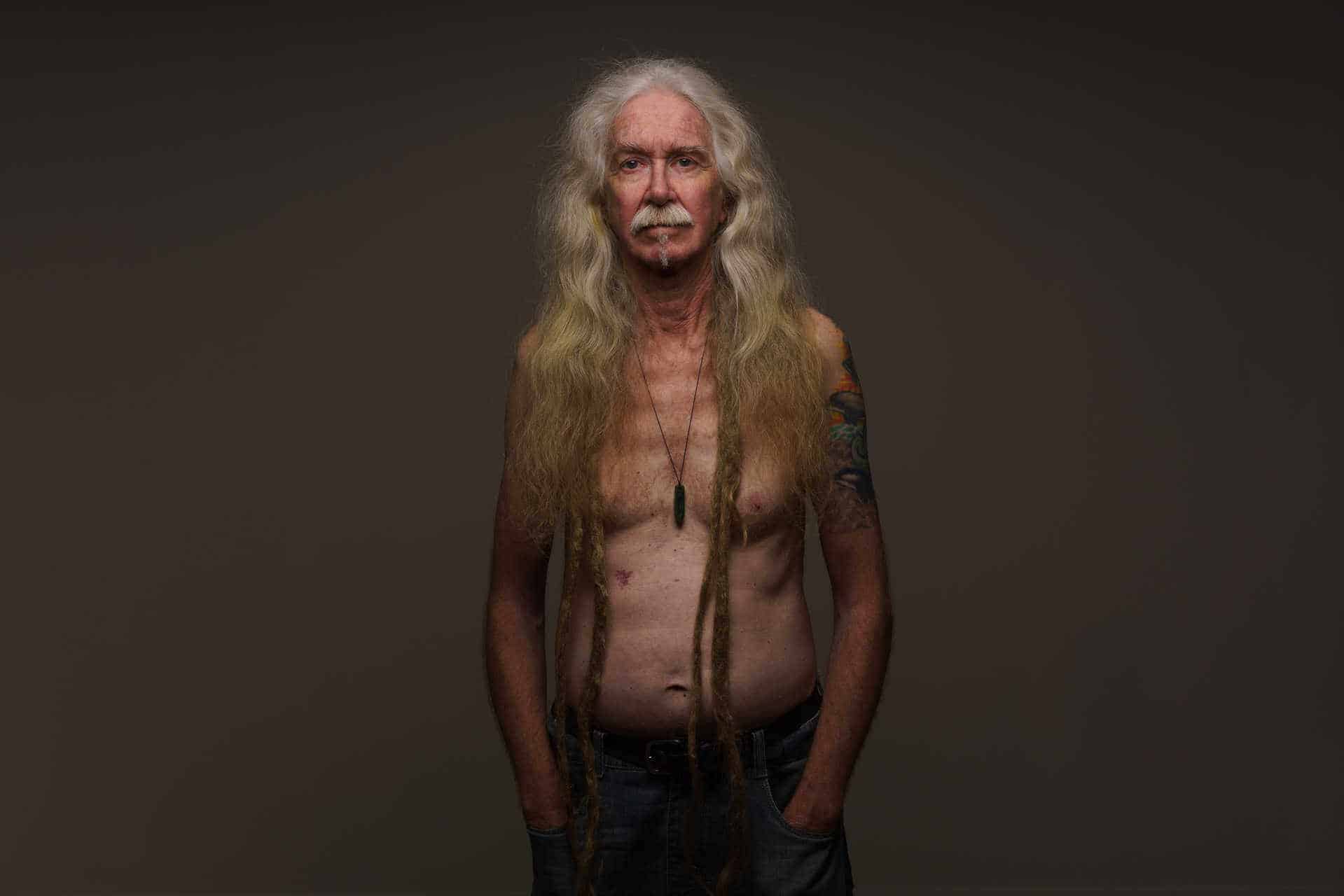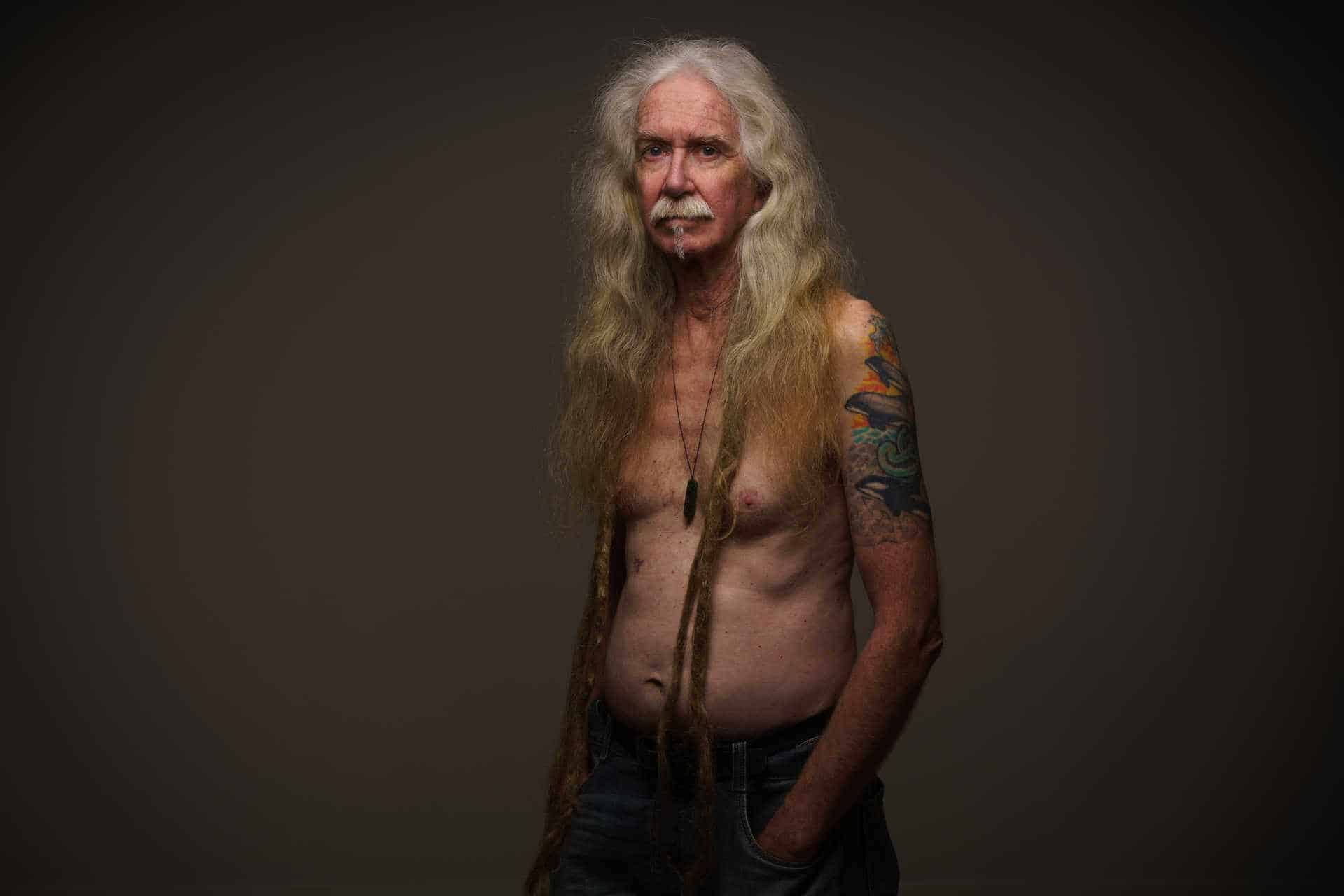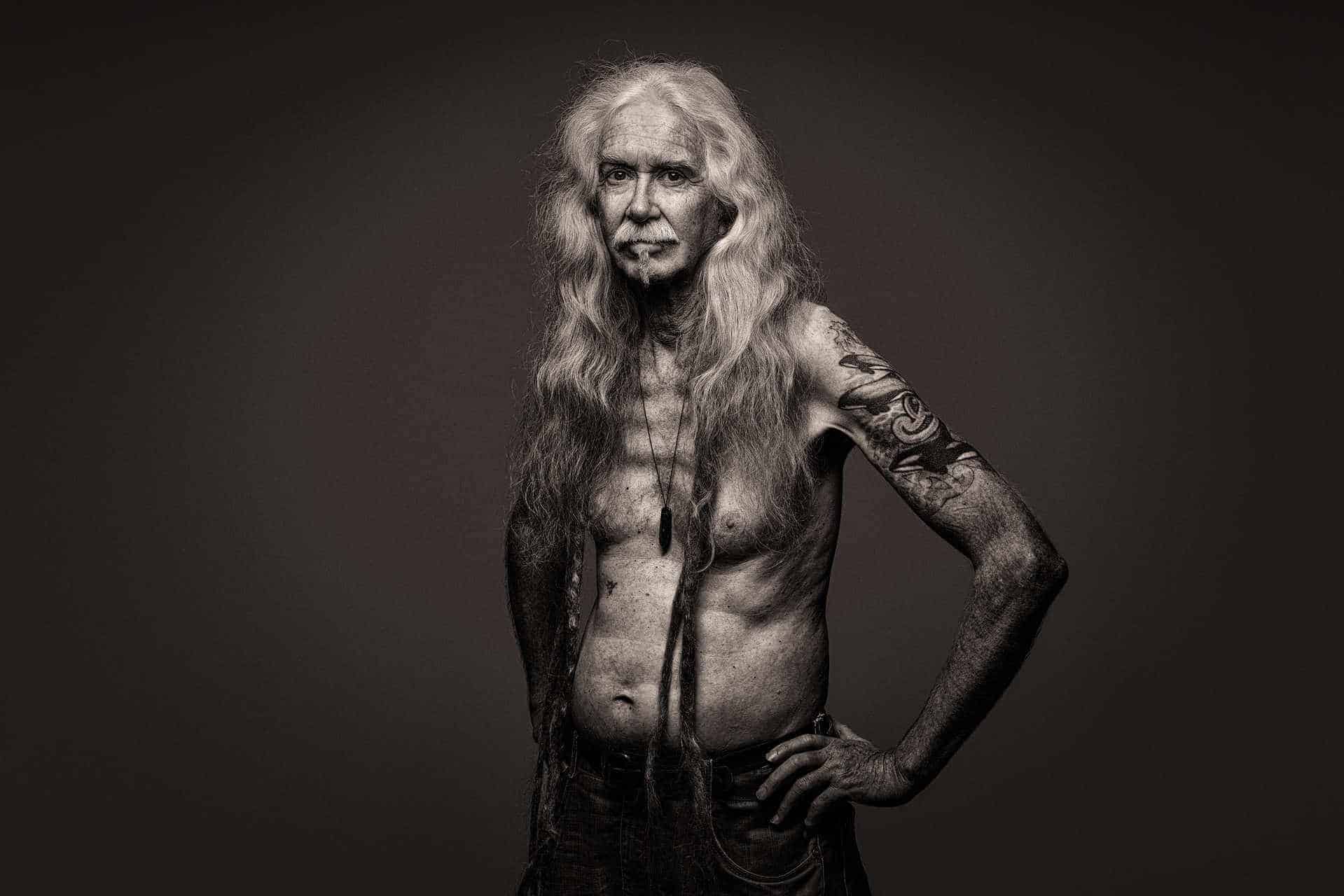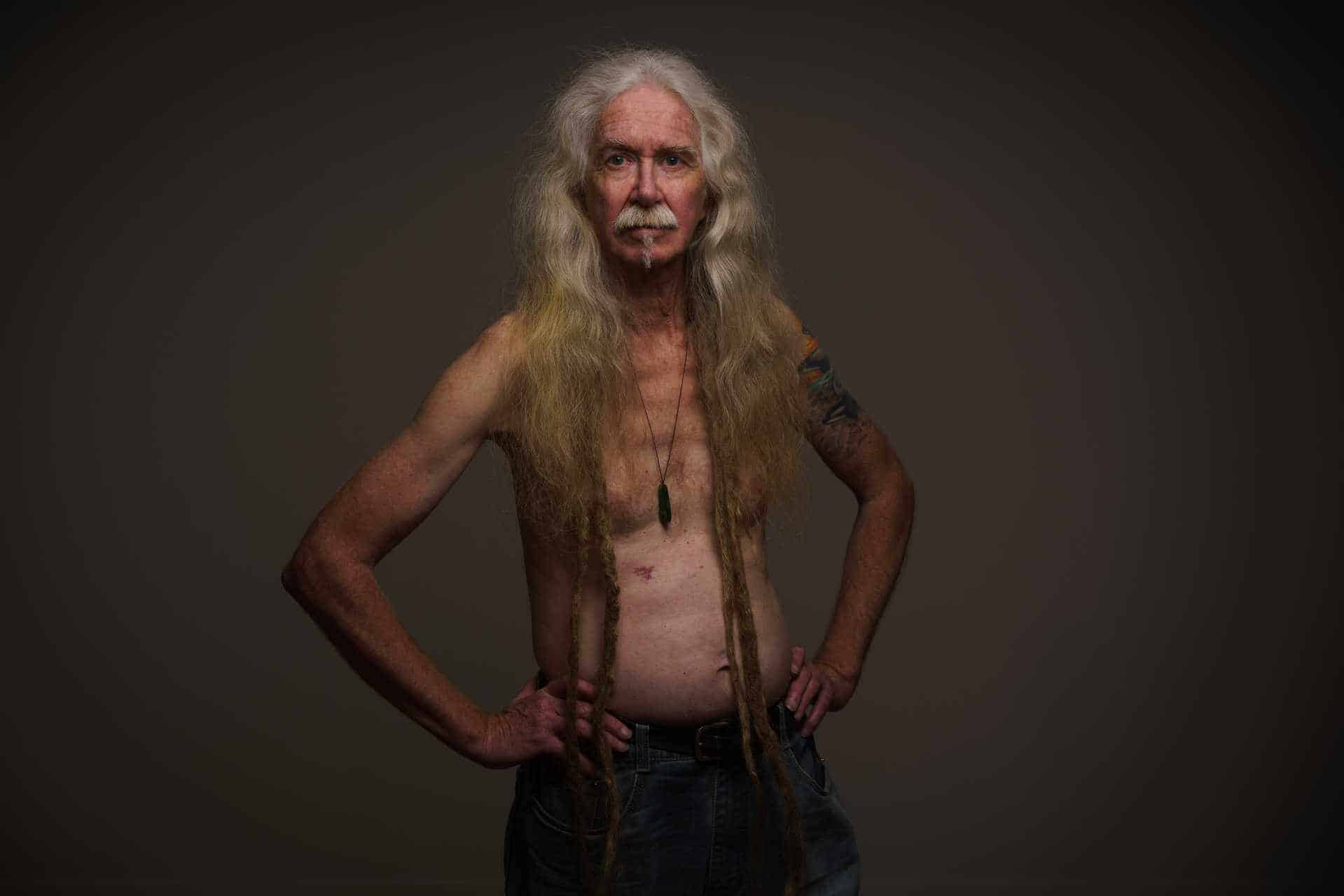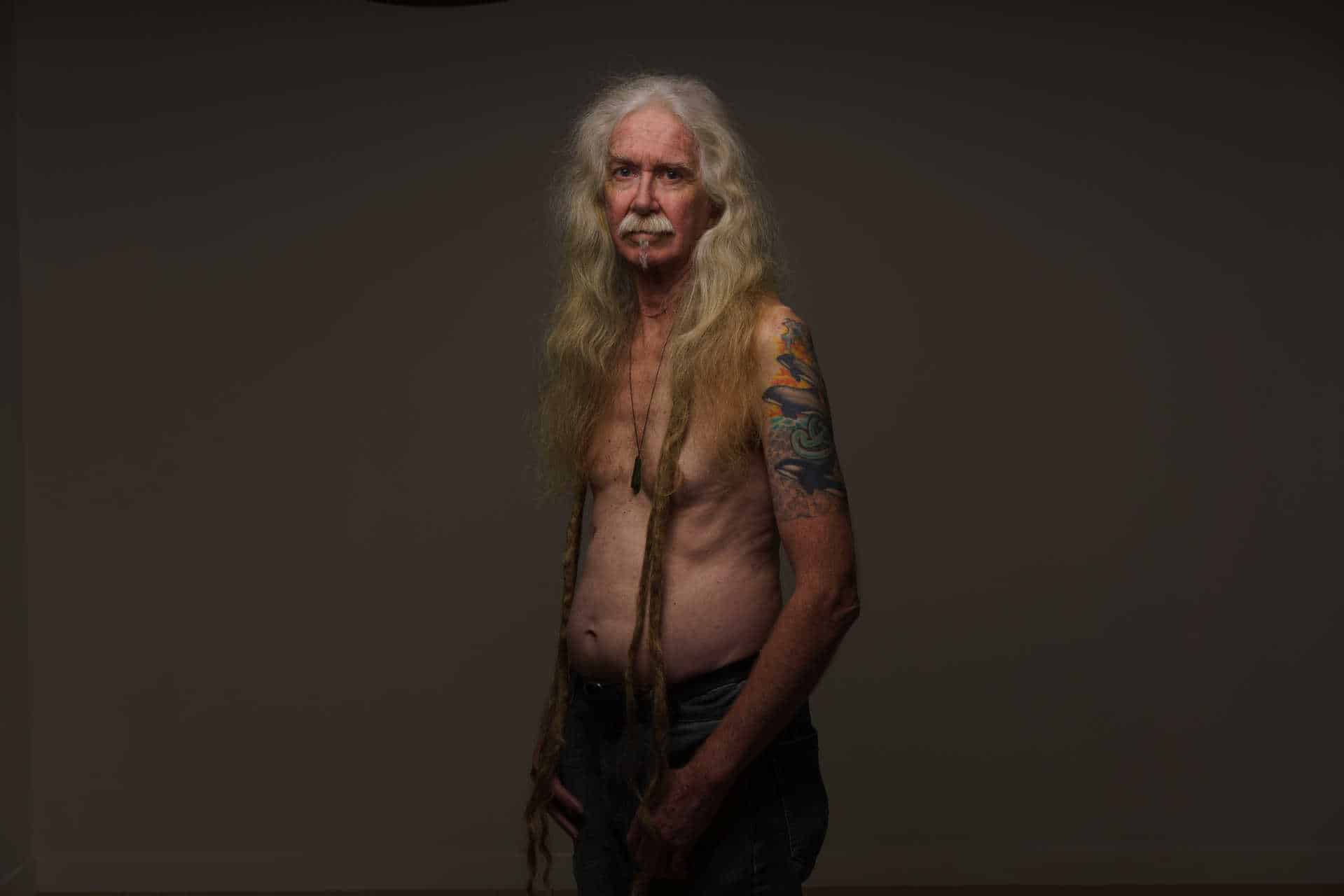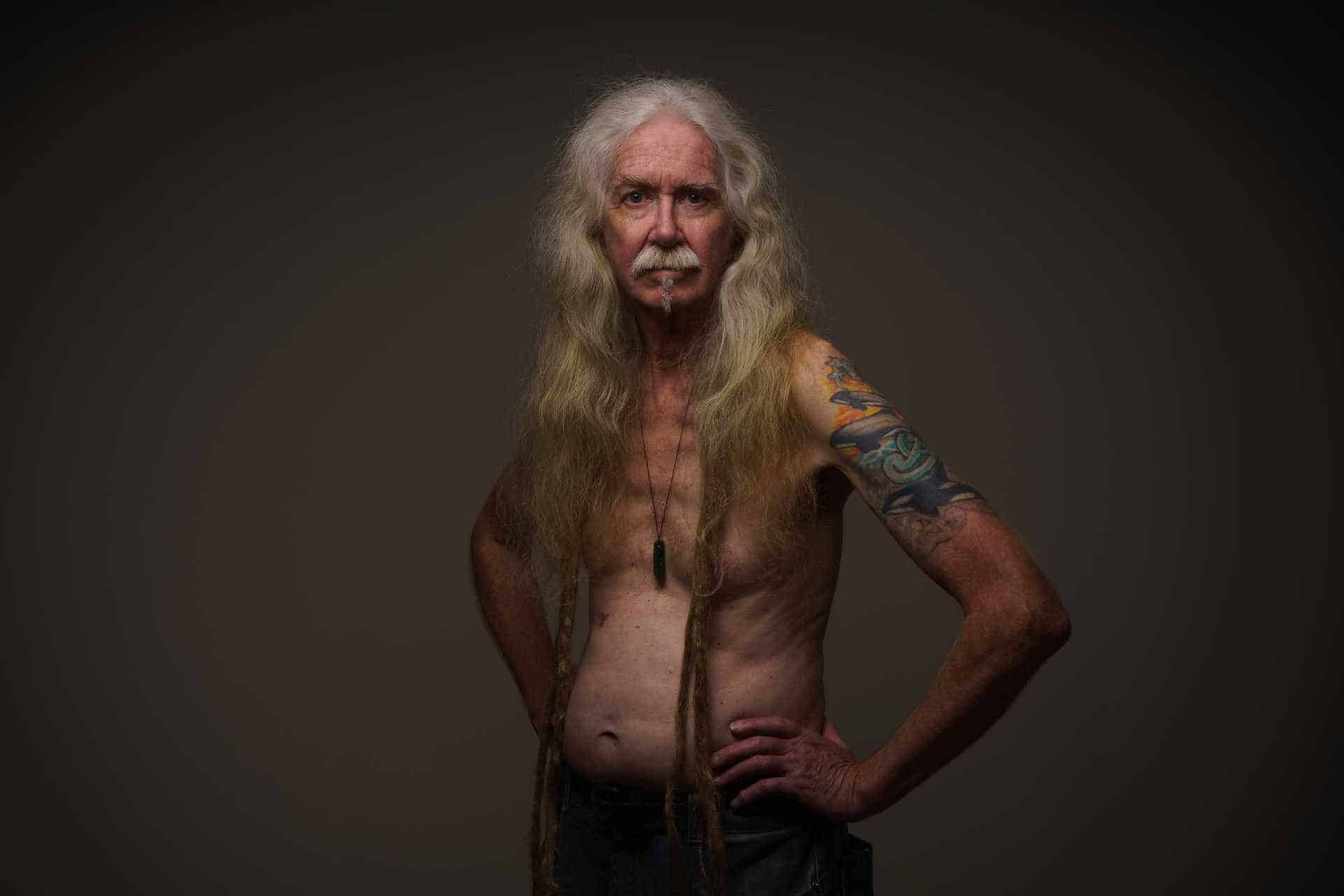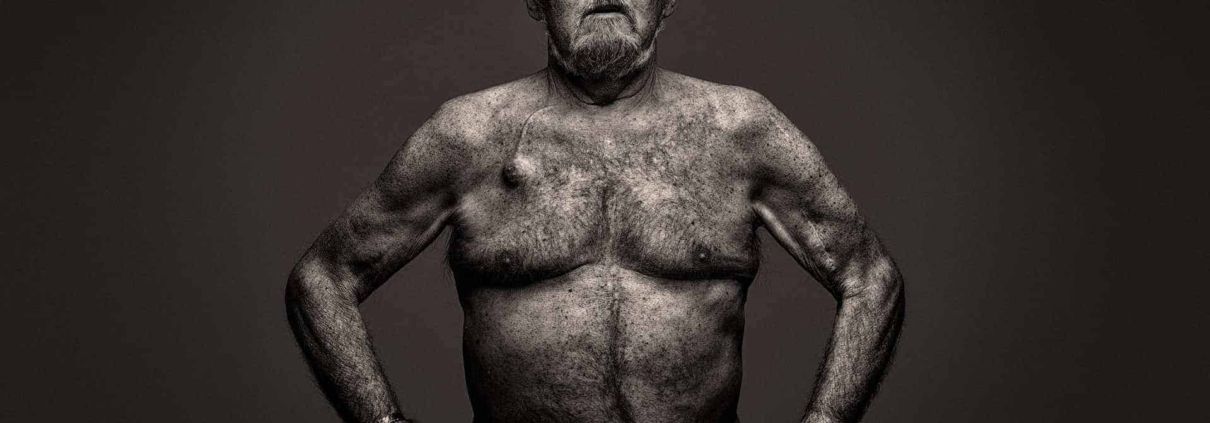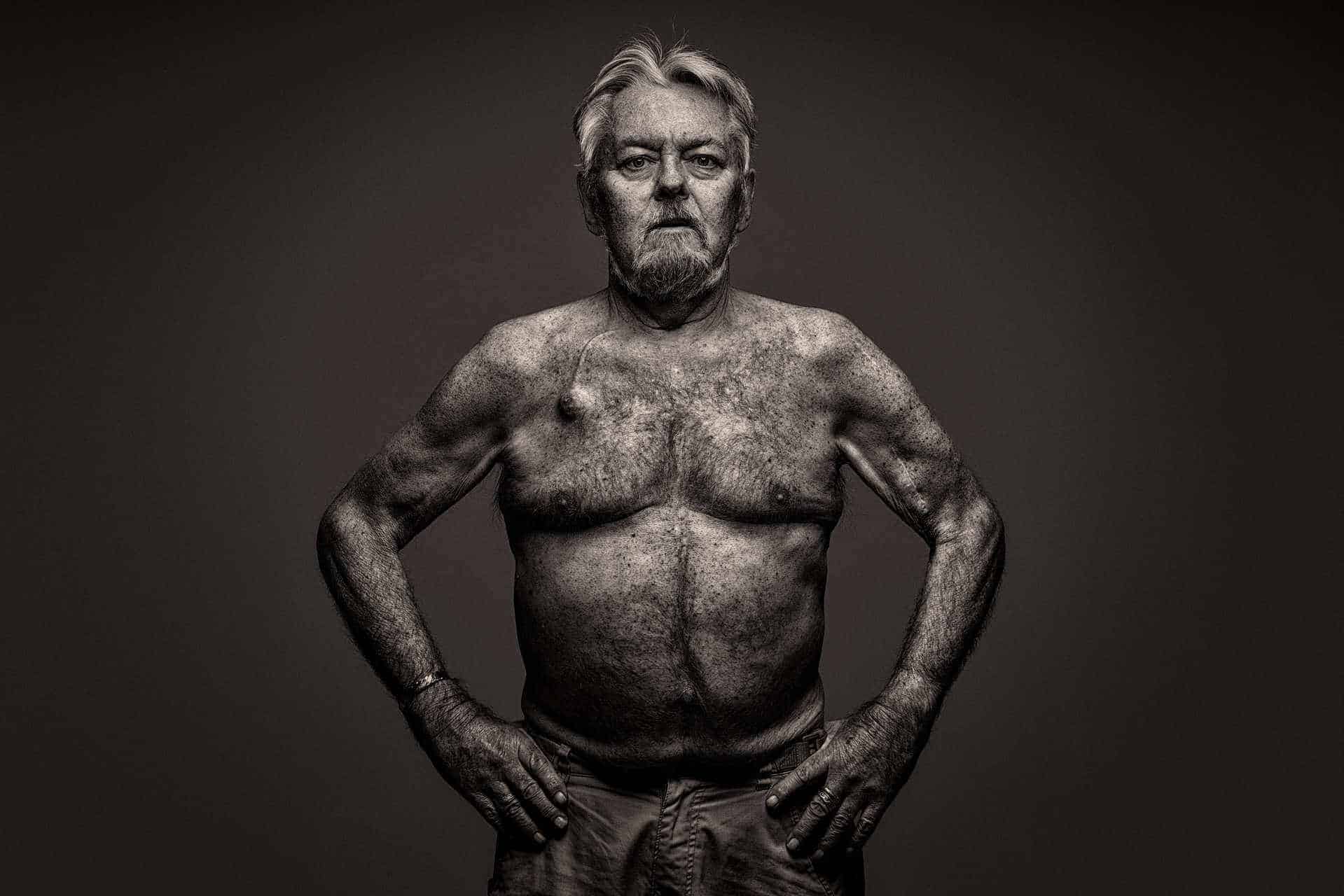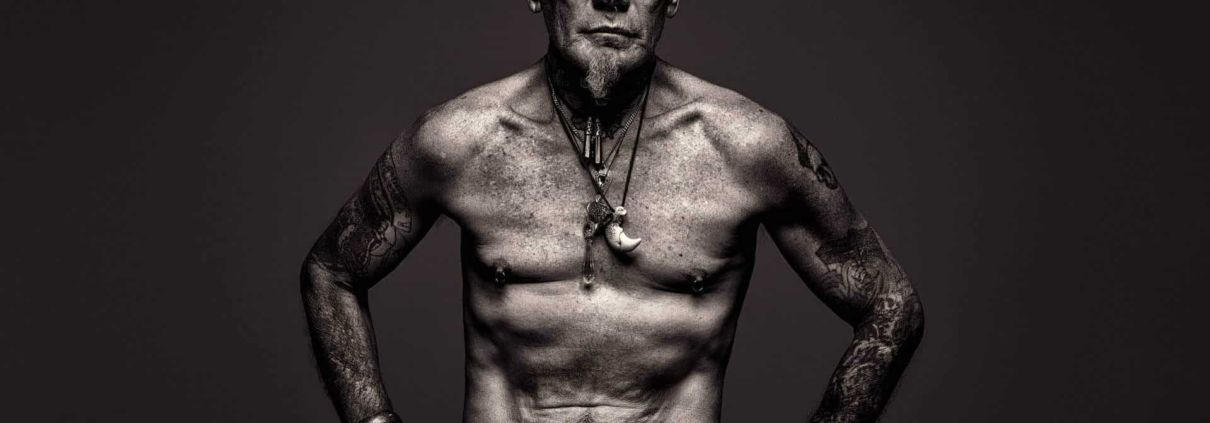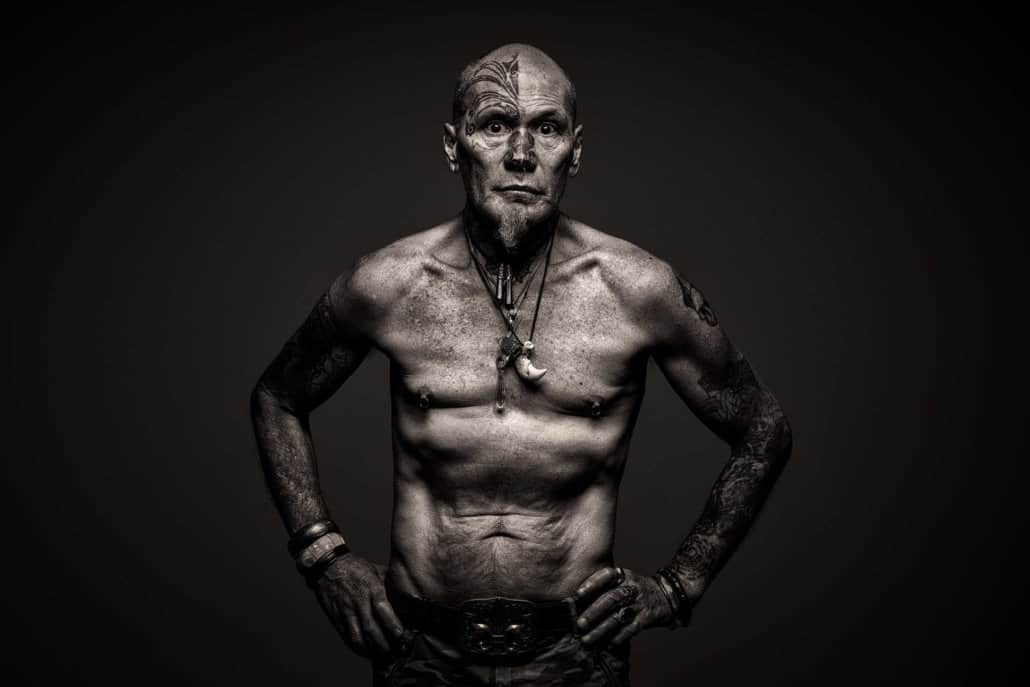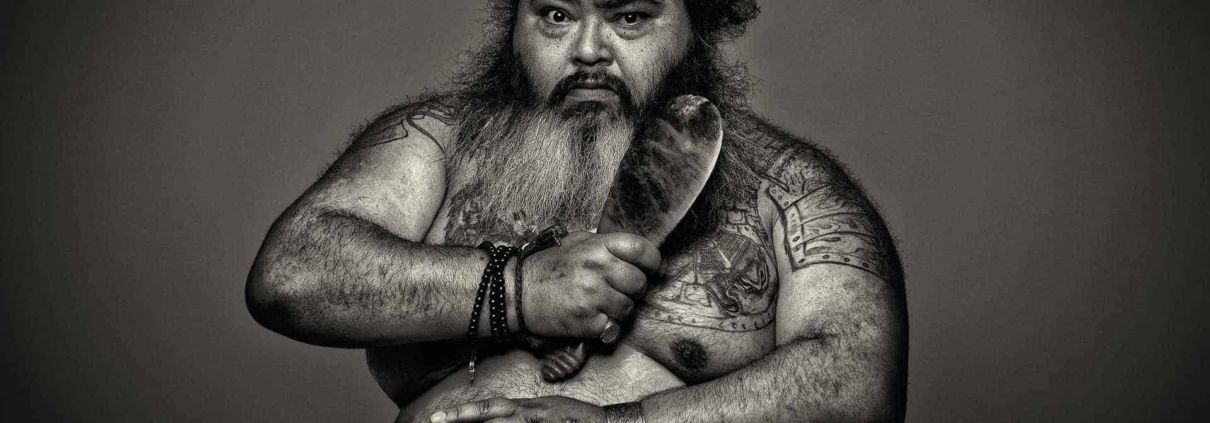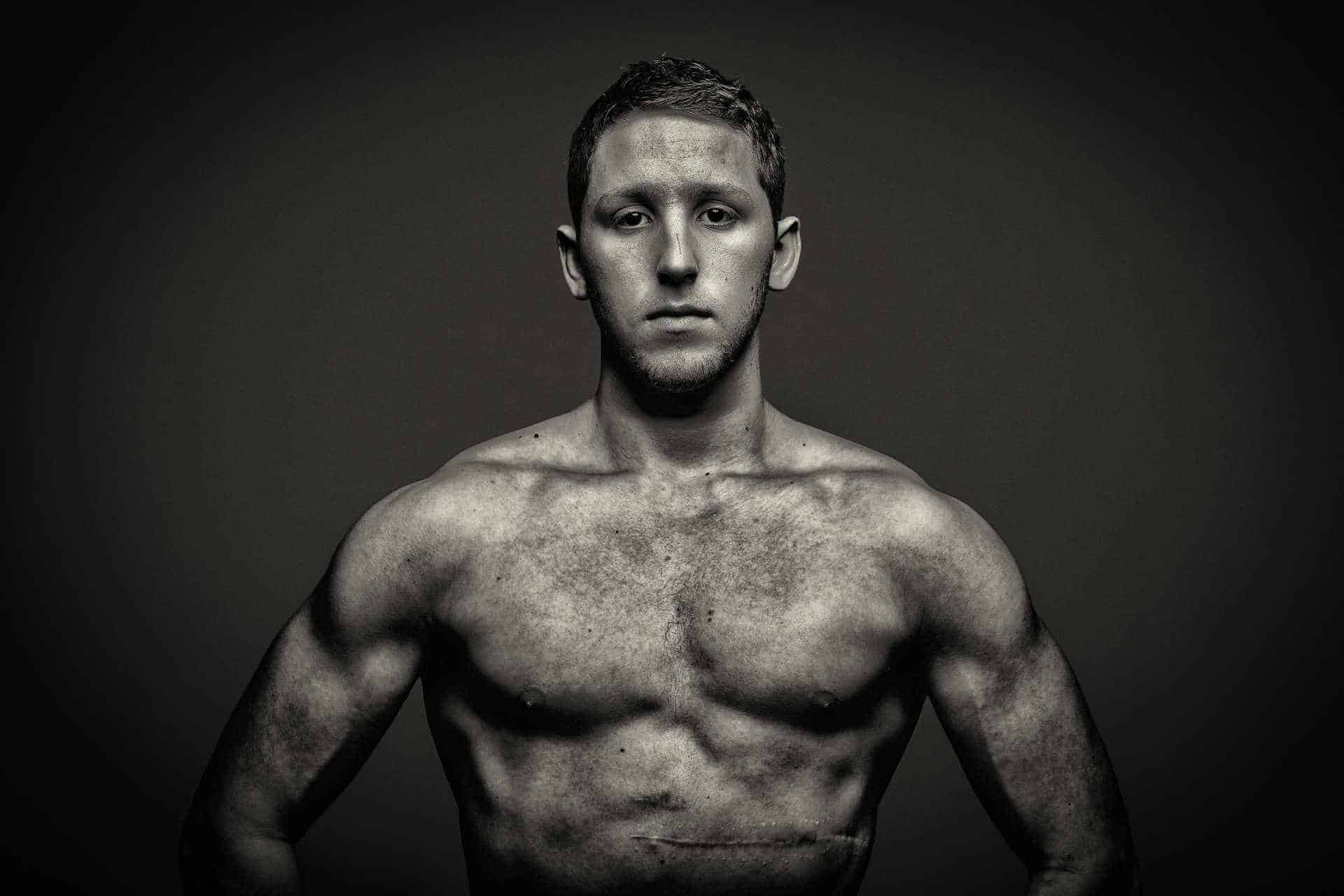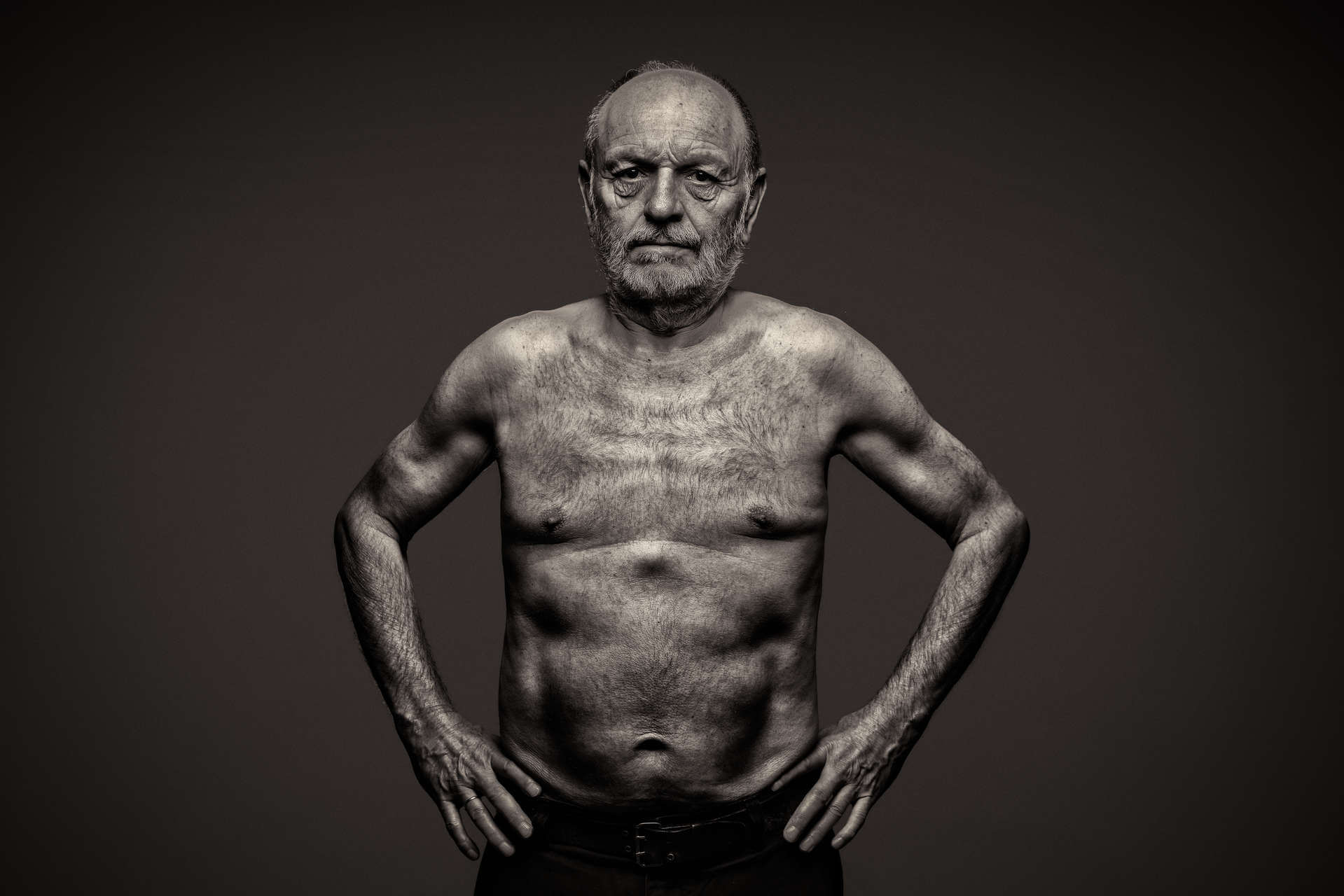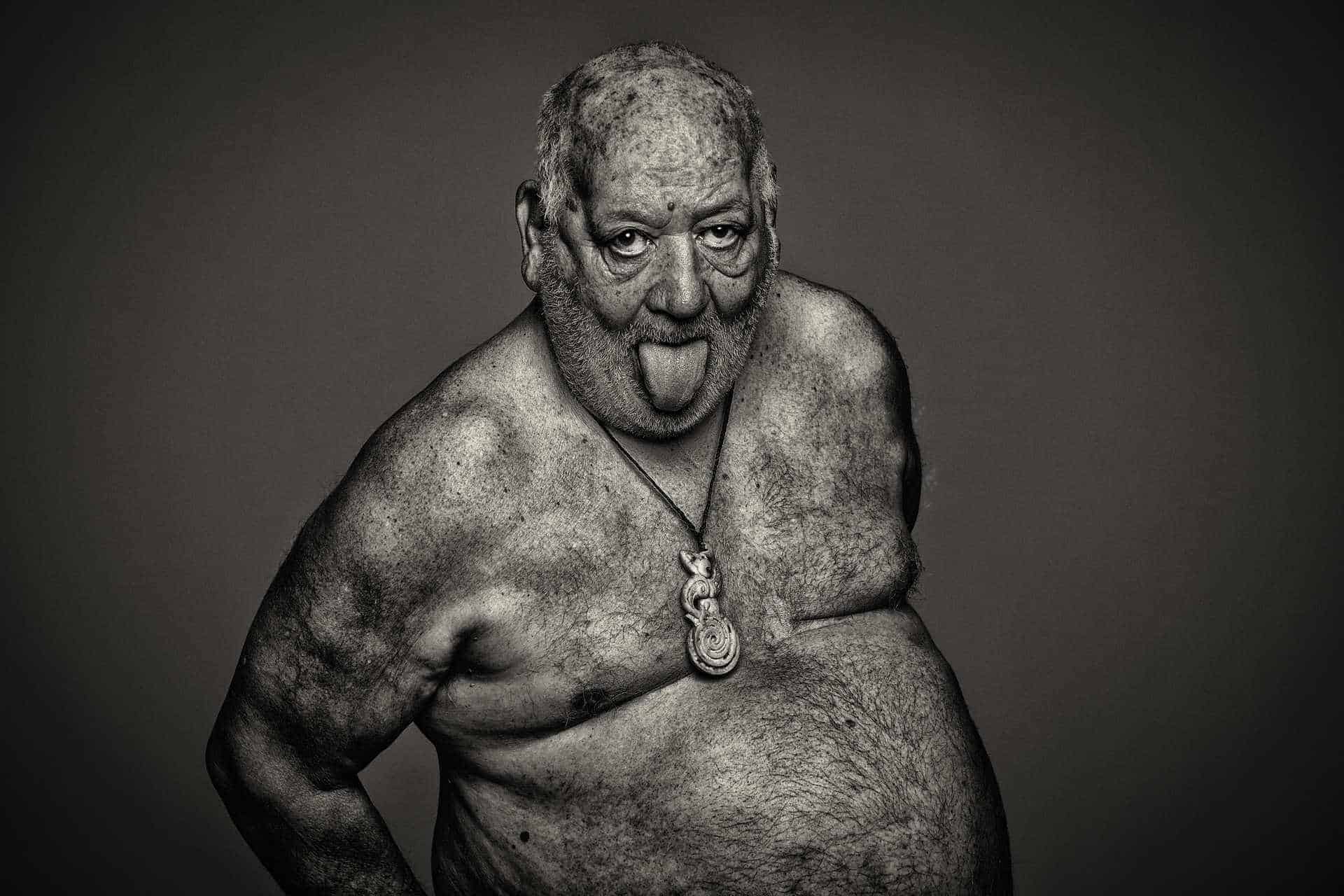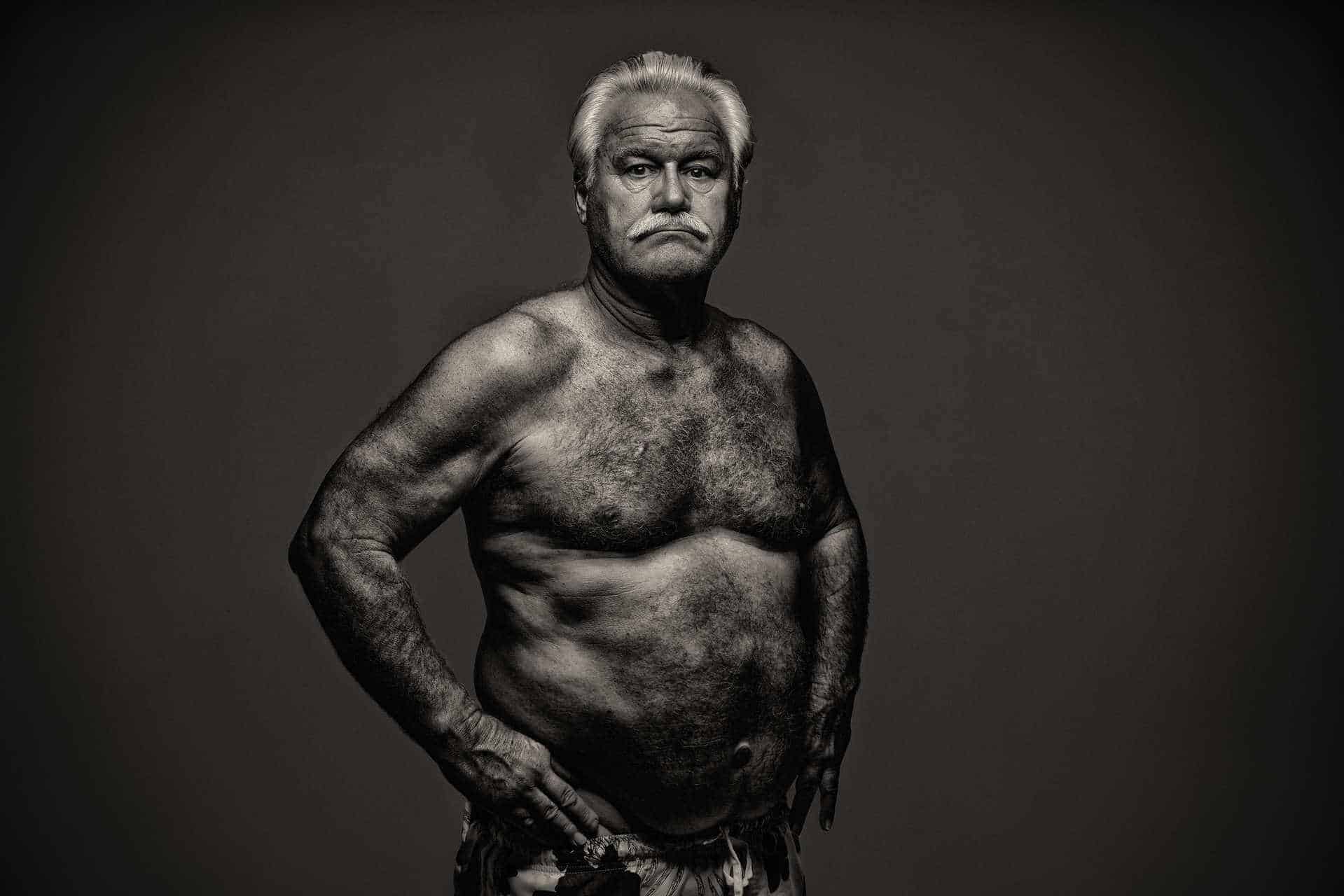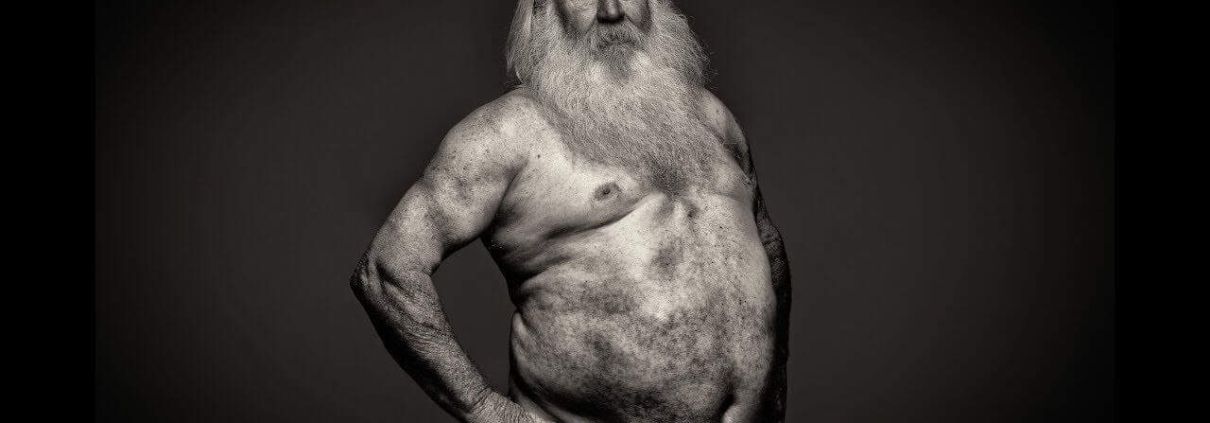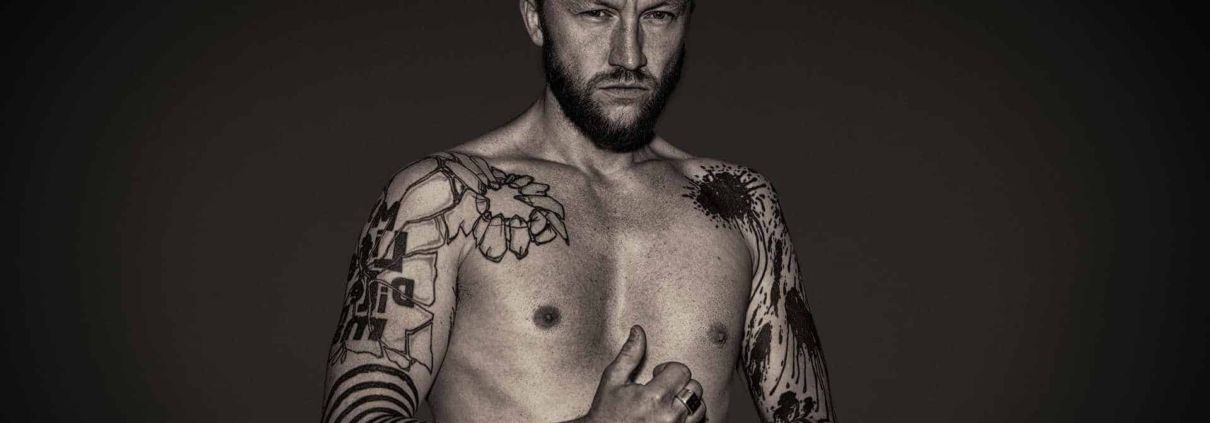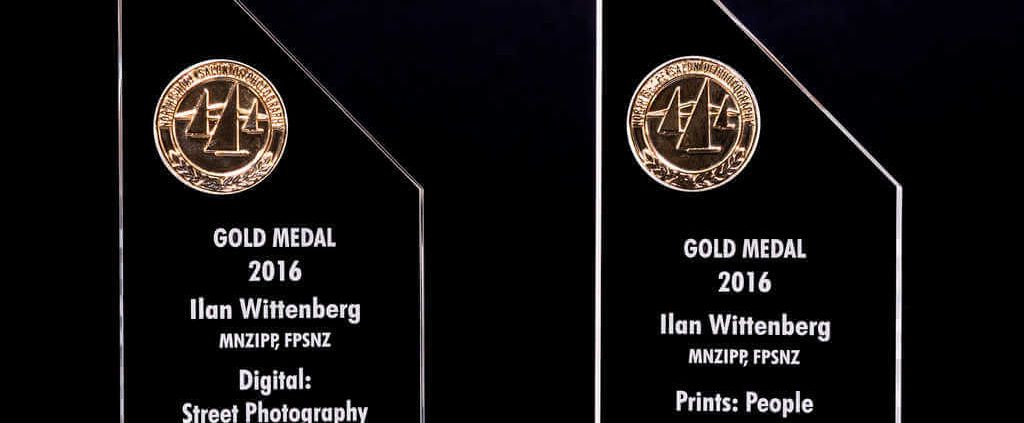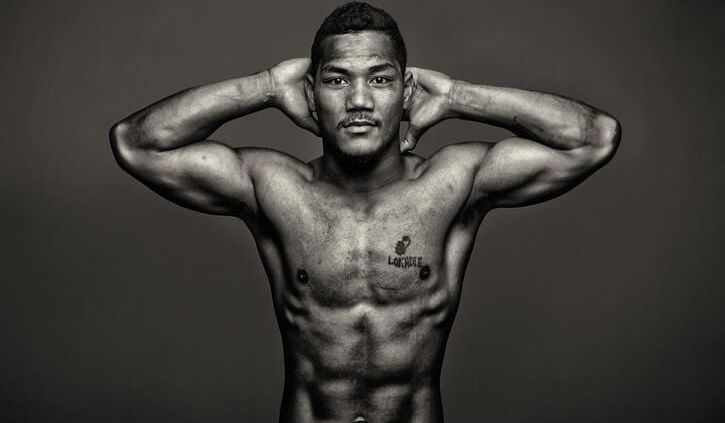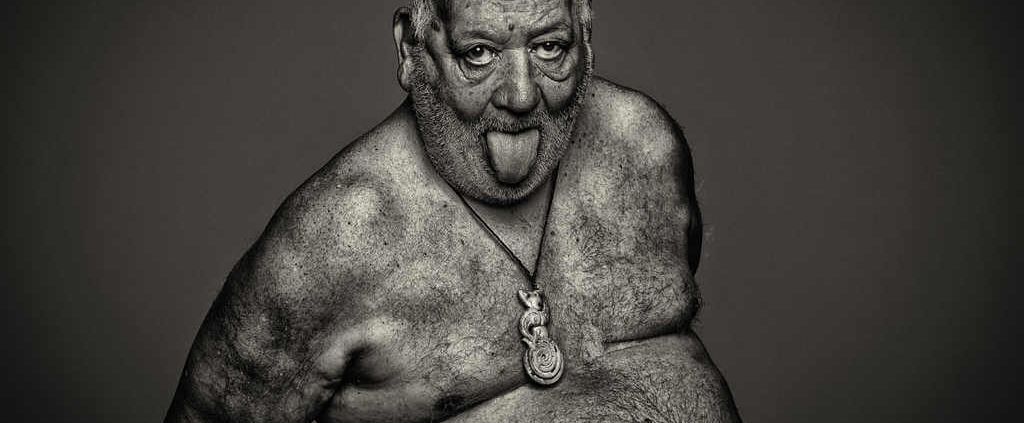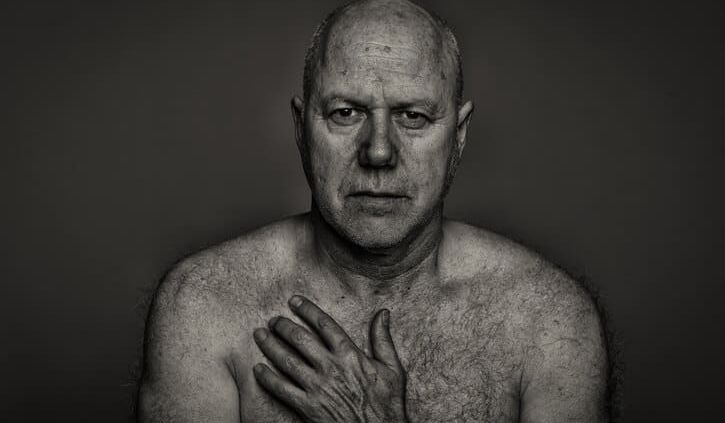Paul Gilbert – Bare Truth
“I am due to be 65 years old (New Zealand’s retirement age) in early December 2019. I have a very aggressive cancer and am in palliative care after two chemotherapy rounds and a failed drug trial. I’m hoping to stay well enough to make that date or better. I have been a “dead man walking” since a burst colon tumour nearly took me out with septicemia, and that certainty transformed and tested my philosophical outlook. I have been very surprised that my previous lip service to my beliefs have now actually been tested and find me in a very rich part of my life. My collateral has always been in relationships, not cash currency and I’ve found this never devalues. Indeed I’m overwhelmed by the support and love returning my way from family, friends and acquaintances, much of it from the many wonderful people working in this often devastating area of care. I have never been more relaxed in my attitude to life and am sensitive to the fact that my calm demeanour attracts simple smiles, gifts and shared enjoyment. Likewise, my forthright opinions and dark humour are often very challenging, but go figure? Why blues music?
Tunnelling down to try to fathom this wonderous shift has not revealed any deliberate or constructed effort. I will take this gift and, while my quality of life is medically managed, try to maintain my voluntary activities with Hospice and elsewhere the need is felt.
Born in a relatively impoverished inner-city suburb with a fabulous mixed ethnicity, I enjoyed primary and intermediate school with good if challenged teachers and a great local library. During my parents’ discord and break up, books were my refuge. It was a household of drink and violence from my father, deep love and sacrifice from my mother.
My life has been strongly influenced by necessity and responsibility. Healthwise I have been free, by and large, of injury or disease and that has allowed me to spot the gap and with some tantalising risk, embark on photographic and maritime adventures when responsibilities lessened. Of course we navigate much of our life with youth’s immortal horizon. I used to say I liked the sound of deadlines whistling by, but no more.
My siblings and I lost our mother to high blood pressure, stress, and little available support, when I was 17 years old. With an absent father, and having just started work, I supported my younger brother and sister through their secondary school years. We ate well on very little because of a socialist food co-operative. My philosophy was forming along with a period of intense and at that time obscure soft-style martial arts training with a weighting toward meditation and energy integration. I have always been grateful that mum passed on her interest in photography, which, at age 7, along with a boat trip, cemented two combined lifelong passions. I have lived aboard yachts, photographed them, and enjoyed that wonderful lifestyle that our sparkling waters provide.
I progressed to a series of technically skilled high-end jobs including teaching. Although low paid these jobs allowed for a parallel passionate development in personal documentary and fine arts efforts. Maintaining an active exhibiting profile fell to one side due to financial constraints. The work however, which is always primary, has continued unabated, if unrecognised, in the fine arts arena. I’m currently looking to house my marine archive.
I became a solo parent to my two year old son after completing a documentary project. He returned to his mother at age 12 and then moved to Australia when he was 17. I have a daughter from a subsequent relationship, access to whom was very sadly limited. I have been recently blessed by Eamonn and Laura gifting us a grandson. Life is a circle.
I am currently very busy trying to organise things for my passing, to save anguish for my loved ones in the rather unknown time ahead. The time feels short, the list long. I’m planning a “Way out Party” to gather with and enjoy my friends and family as soon as is practical, to help them ease into their grief process in a face+to-face farewell, with laughter, ribald stories and much love. Boats will play a part in my crossing the bar.
My very unconventional urn will reside under Mum’s memorial tree, planted by Bruce, Linda and myself when I turned 50 years old. The tree overlooks my wondrous Hauraki Gulf and its islands from above the bay where I lived aboard my yacht for eight years. Traumatised by Mum’s early death it was devastating many years later to return to the cemetery and find they had lost the ashes. The now 3m high tree and its simple bench and plaque, is a place to stand, rest and remember. I am very happy with these arrangements.
Enough of that rough sea!
Being a photographer, I rarely am caught north of the lens hence my appearance here as a record. What have I learned about Photography? Only two things matter:
1. It’s where you stand
2. It’s when you trip the shutter Practice refining this for as long as possible.
Add a decent amount of saltwater. Mix well. Enjoy the Journey.”
PhotoWorld Interview
ILAN WITTENBERG
New Zealand
‘Real Men’
Introduction and interview by Alasdair Foster *
Published in PhotoWorld – May 2019 **
“Men act and women appear.”
John Berger – ‘Ways of Seeing’
Introduction
In Western culture, men are traditionally judged by their agency (what they can do to you or for you) and women by their appearance. Women are to be looked at; men do the looking. There are many more images of the female body in the history of Western art than there are male. And, where the male body does appear, it is strictly contextualised in one of three symbolic roles: hero, fool or martyr. The hero transcends the reality of the male body to become a symbol of dynamic triumph. The fool is mocked for his nakedness, removing him from serious consideration as a representative of his gender. The martyr – an especial favourite of the Christian religion – is naked and broken, but his defeat is temporary as the narrative promises he will later ascend to heaven to be eternally revered as a saint.
Real men are not like this. They are flesh and blood, diverse, and susceptible to the inevitabilities of illness and aging. Yet, as men, the way we feel about our bodies is often an uncomfortable contradiction between lived reality and the symbolic perfection reflected to us in advertising and in art.
The photographs of the New Zealand artist Ilan Wittenberg are very different from these impossibly idealised images of masculinity. His extensive catalogue of men living in and around Auckland captures each in all the complexity of frailty and forbearance, uniqueness and imperfection, anxiety and the courage to overcome it. In English, when we speak of ‘real me’ we often mean the opposite; we mean individuals who appear to live up to the impossible aspirations of masculinity. But Ilan Wittenberg’s photographs truly do present real men; the unadorned reality of male faces and bodies in all their great variety. As the title of the series declares, this is literally and figuratively the ‘Bare Truth’.
Ilan Wittenberg was born in Israel, emigrating to New Zealand in 2001. He has a Bachelor of Science in Industrial Engineering and a Master of Business Administration in Information Technology. Having worked in these areas for thirty years, he moved into photography in order to realise his passion for visual expression. He quickly established a reputation as a skilled and creative practitioner, winning dozens of accolades including both the portrait and the overall prizes at the 2018 Sony Alpha Awards. A Fellow of the New Zealand Institute of Professional Photography (NZIPP), his work has featured in many gallery and festival exhibitions including Head On Photo Festival in Sydney, Australia, and the ‘Signature Program’ of the Auckland Festival of Photography in New Zealand. You can see more of his work at his website: www.ilanwittenberg.com
IntervIew
This series of articles is looking at the work of photo-artists who have a different ‘way of seeing’. How would you describe your ‘way of seeing’?
It’s been said that photography is the easiest artistic medium in which to be competent, but the hardest medium in which to have a truly personal vision. It’s very much like talking: everyone can talk but few have something original to say. I have developed a clear style that allows me to tell a story in an imaginative and thought-provoking way. My aim is to create work with a strong ‘stylistic signature’ and a clear narrative sense. I wish to inspire people with images that are crisp and sharp; to evoke emotions and to demonstrate a personal creative vision.
Photography is a way of communicating without words. Unlike videography, which has duration delivering a story through sound and motion, photography is still and present. It does not consume time, and consequently offers the viewer the possibility of interpreting an image differently each time it is viewed. As the famous American photographer Ansel Adams once said: “There are always two people in every picture: the photographer and the viewer.” In my work, there is a third, the subject, who is observed by each of the other two.
How did this series – ‘Bare Truth’ – begin?
I had been thinking about the idea of photographing men without the ‘protection’ of their clothes, but I was unsure how to go about achieving it. I had mentioned it a number of times to one of my close friends, but he would always laugh at the idea. Then, one day, he was very busy packing to move permanently overseas. I offered to dispose of his rubbish after he left if he would give me thirty minutes in front of my camera. Somewhat reluctantly, he agreed to take off his shirt. As I was photographing, he raised his hand across his chest and looked straight into the camera. I could see the sadness in his eyes, his stress. Set against the simple background, his personality shone through. It was for me a moment of profound insight.
How did the project develop from there?
I asked my son to pose for me. He was just recovering from an operation, so the scar was showing fresh on his torso.
After that, I approached some of my close friends and tradesmen who were working on jobs around the house. Later, I invited men that I met at the local Sunday market. I began to realise that this had the potential to become a unique body of work; one that would become stronger the bigger and more diverse it became. I realised the power of these portraits and the potential they had to form a much larger series. The biggest challenge was finding men willing to pose shirtless in front of the camera.
How did you go about that?
The initial portraits helped me gain valuable experience and formalise a consistent and distinctive visual style. I became more confident in making an approach. I uploaded those initial images onto my cell phone so that I could easily show them to prospective subjects, many of whom were total strangers. This helped to engage them and overcome any initial concerns. Even so, it is a time-consuming process. Out of every ten men that I approach, five say “no”, four say “maybe” and only one actually shows up.
How did you seek out or select men to pose for you?
Initially I would photograph anyone who would agree to pose. Now, I am more selective, looking for people with an interesting ‘story’, men with a personality who will add diversity to the collection. Most of the men are from the local neighbourhood, people I meet at the street or in shops. They live locally so it is easy enough to find a suitable time, but a few do travel from further afield. On rare occasions I receive a request from someone asking to be included in the series, usually via social media. In those cases, I never refuse. Only about ten per cent of the men in these photographs are people I knew before they posed for me.
How many images are in the series now?
I began the project in mid-2015 and there are currently over 200 portraits in the series. I try to add one new photograph to the series every week. There is value in extending the scale and variety of this unique collection: every man is different, and the strength of the portfolio lies in that diversity.
There are quite a lot of men with tattoos. Are tattoos common in New Zealand?
I think that people who wear tattoos tend to be more extrovert than the average person and more inclined to show off their ‘body art’. A tattoo is a powerful personal statement about one’s life, traditional heritage and personal style.
Why did you call this series ‘Bare Truth’? What truth are you seeking to address or reveal?
When I looked at that first photo of my friend before he went overseas, I was moved, touched and inspired. I realised that we attach a deep meaning to a person’s facial expression. It takes us a fraction of a second to judge someone. It’s fascinating to think how quickly and subconsciously we form that opinion based solely on physical appearance: this person looks confident, that person looks depressed, or dangerous; calm, happy, sad… Photographed without the ‘shield’ of clothes, without those things that signify social standing or personal taste, these images provide an unexpected and enlightening opportunity to see the real people behind the ‘façade’. We are all flesh and blood; and we are here on this planet for a short period of time. This project simply reminds us of how fragile we are.
The title ‘Bare Truth’ implies that our face reveals the truth, we cannot hide it. It is also a play on words as the men are naked from the waist up. I think that the meaningful title helps people identify with its purpose. And for some of the more modest or shy subjects, it gave them the courage to expose themselves in front of the camera.
These images have a strong ‘aesthetic signature’. How did you achieve that sharpness of detail and clarity of texture?
I use a single source of illumination employing a ‘beauty dish’, which wraps the light around their body in a very distinctive way. [A beauty dish is a photographic lighting device that uses a parabolic reflector to distribute light towards a focal point, which adds a more dramatic contrast to the subject. The light created is gentler than that of a direct flash but more directional than with a softbox.] I bring the light as close as possible to the subject’s face. This creates a directional illumination with deep shadows under the eyes, nose and neck, emphasising every crease in their torso.
My aim is for the images to have the reassuring directness of a classic, in-camera capture. I want to emphasise the truth of the image in an era when people are losing faith in the ‘honesty’ of the medium. I simply process the digital photographs to enhance their skin texture. This is done using Photoshop with the Silver Efex Pro plugin by Nik. That heightening of contrast helps to create a sense of drama, lending to the series a unifying style that emulates analogue lithographic techniques.
It is very important to me that there is a ‘catchlight’ in their eyes, so I carefully set the ‘beauty dish’ according to their height and enhance the highlight manually if required.
Although these are images of the whole upper body and head, you have talked about the importance of the eyes.
As the proverb says: “eyes are windows to the soul”. The look in someone’s eyes is very meaningful and we immediately interpret it, often subconsciously and always subjectively. Much of our interpersonal communication is not verbal. When we shake someone’s hand we look them in the eye and, subconsciously, judge if we can trust them. The strength of this series lies with the directness of each man’s gaze. It affirms integrity and honesty – hence the title: ‘Bare Truth’.
We tend not to judge men by their bodies. There is a degree of vulnerability in posing without a shirt, especially if one is not young and athletic.
I admire the bravery and humility of the men who agree to participate in this project. Some are young or lean while others are fat or old. The strength of the portfolio lies in how similar the photographs are in terms of pose and lighting, while, at the same time, very different in terms of subject.
How did the men you photographed respond to seeing their photograph?
Most men appreciate the final image, but some find the dramatic way in which the skin texture is enhanced to create drama really confronting. One man who posed said he would never show his photograph to his wife as he did not want to frighten her. But then another man was so proud of his portrait that he posted it on social media! He told me that he had found the process of standing in front of the camera was liberating – a sort of catharsis. He said that he used to hate his body; being a part of ‘Bare Truth’ had helped him on his journey to accepting it.
For the most part, the men who pose really do seem to appreciate the experience. The shoot is an opportunity to spend time together and listen to their personal stories. I ask them about their scars, their tattoos, what they do for a living and so on, and in this way we become more acquainted.
You have said that one of the goals of this project is to raise awareness of the challenge men face when dealing with emotional vulnerability, and the problems of stress and depression they can feel as a result. Can you explain what you mean by this?
Many cultures portray men as strong, physically and emotionally. This stereotype sometimes leads to adverse outcomes, made worse by the way men typically fail to seek medical help for symptoms such as depression, stress and anxiety. One of the goals of this project is to raise awareness by showing men expressing complex emotions of strength and vulnerability, confidence and anxiety. Some carry on their bodies tattoos which help remind them of loved ones that passed away or scars that mark an accident or surgical operation. These are significant markers that give them strength on a daily basis. I think that we all look for a meaning in life and in our relationships one with another. Taking part in a project shared in common can make us feel part of the community.
Images can be valued on many different levels: artistically, as evidence, in terms of the questions they raise or challenges they provoke. What would you identify as the most important aspect of this work for you personally?
I think that this project helped me develop a distinctive artistic style, a personal visual language, which is very hard to do in the field of photography. In turn, it has helped me create a unique body of work of which I am very proud. The process of making the images in this series has made it possible for me to meet people who are completely outside my social circle; people who I would never meet under other circumstances.
I keep looking for suitable people to photograph. This means that I remain more ‘present’ in the moment and in the place; observing people around me and seeking opportunities. It also helps me connect with people. In the process of approaching potential subjects for my photographs, I have been able to learn how to engage people, to read their body language and, in many cases, to face rejection.
What have you learned about yourself in the process of making these images?
If you have the confidence to try something, you may well succeed. If you do not, you will surely fail.
* Alasdair Foster is a consultant specialising in international cultural projects and a researcher in the theory of arts policy formation. Dr. Alasdair is currently a Professor of Culture in Community Wellbeing at the School of Public Health, University of Queensland. He is also Adjunct Professor, School of Art and Member of the Contemporary Art and Social Transformation research group in RMIT University, Melbourne. Alasdair is the Ambassador to the Asia-Pacific PhotoForum and a Principal Consultant to Cultural Development Consulting.
** PhotoWorld magazine is China’s most influential photography magazine, introducing international frontier image culture, focusing on new concepts and unique perspectives. Published for the last 33 years, it has a profound effect on generations of Chinese photographers.
Emil Bilinski
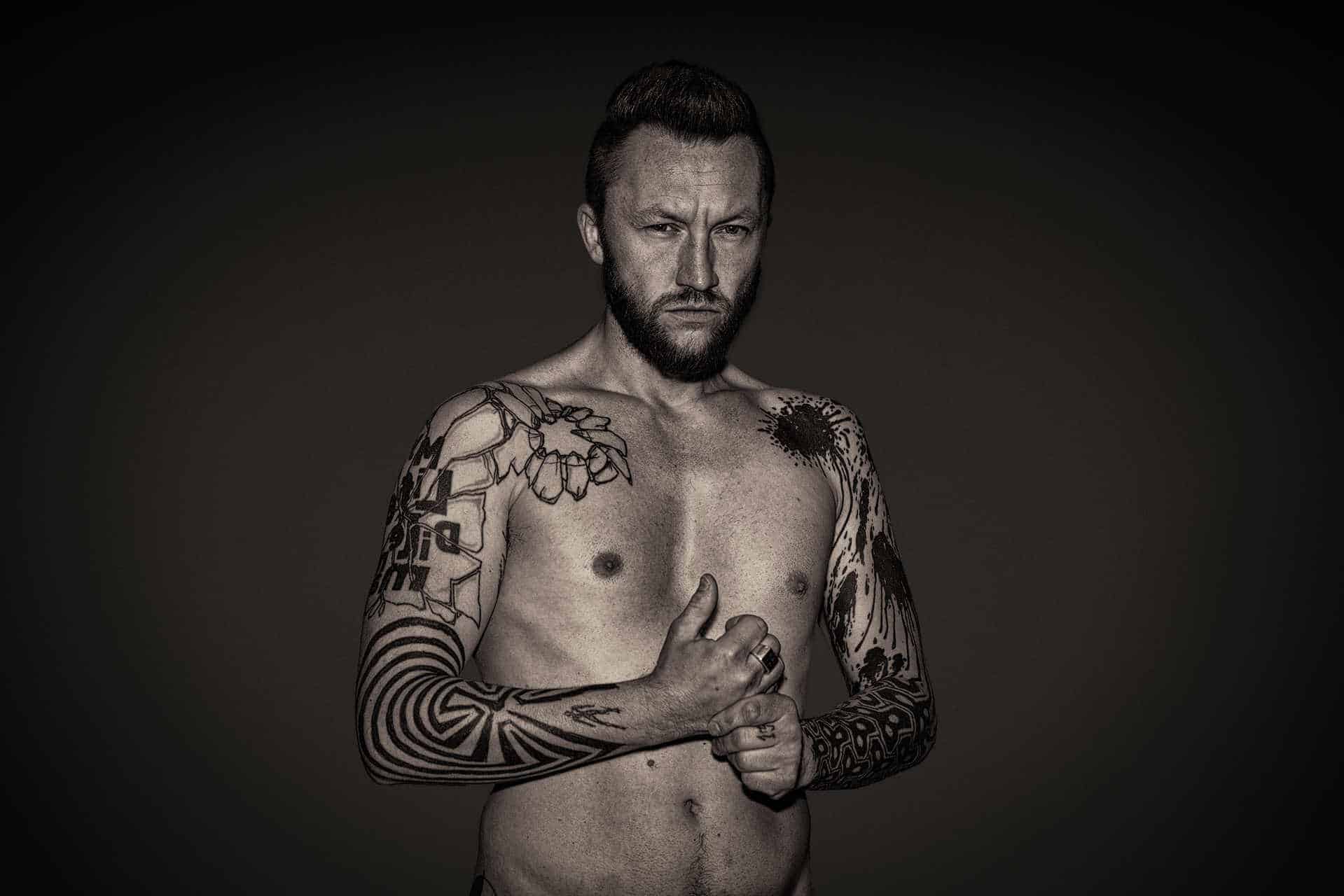
Portrait Photographer Auckland
Austrian photographer Emil Bilinski lives and creates between Warsaw, Berlin and Vienna. His work is internationally recognised throughout Europe and Australia. A member of the Ilford masters, the Coloratti Pro and the Rotolight masters of light. His professional path started at the side of Andreas Bitesnich. Throughout 20 years of his career, Bilinski has collaborated with remarkable artists, including Anne Leibovitz, Peter Lindbergh and David La Chapelle. His editorial work featured in renowned publications, such as Harper’s Bazaar, Cosmopolitan, Elle, Matador, Diva, Women, Playboy, Schön, Sunday Times Perth and others. He is frequently a jury member at the tv modelling competition shows such as Top Model (Austria and Poland) and Supermodel. Emil Bilinski specialises in beauty, fashion and commercial photography. He created signature campaigns for L’oreal, Carlo Rossi, Timotei, Wella, Sebastian Professional, Samsung and Braun among many others. His photographs have continued to contribute to the Schwarzkopf Austrian hairdressing award for the last 11 years. His imagery inspires with subtlety of aesthetics, timeless vision, remarkable perception of reality and meticulous approach to the construction of light.
Gold at 2016 North Shore National Salon of Photography

Honoured to win two Gold Awards with a couple of my favourite portraits at the prestigious North Shore National Salon of Photography!
Established in 1995 by the North Shore Photographic Society, the Salon aims to promote the art of photography in New Zealand through an inspiring annual event.
This year’s Salon attracted 2,104 entries from 600 entrants including members from 33 photographic clubs and societies from across the nation. The Salon convenes independent panels of six selectors to judge entries in various categories such as Open, Impressionist, Scapes People, Abstract, Action and Street Photography.
All awarded prints and digital images were displayed at Mairangi Arts Centre. I’m delighted to take part in this beautiful exhibition with dozens of stunning photos!

Bare Truth
‘Bare Truth’ is a compelling collection of portraits of New Zealand men. The extraordinary photographs expose the men who are very humble, courageous and vulnerable. Their edgy portraits are presented in monochrome which emphasizes their shape and form. The simple background eliminates distractions so the viewer can focus on their bodies and facial expressions.
The combination of using a soft directional light while adapting a special post-processing technique, enables me to enhance their body features so the images are raw and crisp. It is important to me to capture a highlight in their eyes so they look directly at the camera – the eyes are the first thing we notice and must be sharp.
The idea of creating a series of photographs showing men who expose their bust evolved gradually. The biggest challenge was finding the first person to agree to pose. After a few rejections and setbacks, I created a portrait with a close friend and became really engaged with looking into his eyes.
At first I asked only close friends to participate. After gaining valuable experience and formalising a consistent look, I expanded the portfolio and became confident in approaching total strangers. Having a few examples helped me to overcome objections until the project gained a critical mass with dozens of portraits. I focus on capturing a variety of ethnic groups, poses, age groups and body sizes.
I gradually became more selective and started approaching people who looked more interesting to me – people whose face and body tell a story. I capture around 50 photos of each man and use a selection process in order to choose the image which best represents his personality. While some people are very comfortable posing without their top, others feel this is completely outside their comfort zone and a few view it as a therapeutic experience.
The project gained further momentum after winning prestigious awards and becoming a Finalist in the Portrait Classic category of the 2015 Iris Awards form the New Zealand Institute of Professional Photography which then awarded me the title: ‘2015 Auckland Photographer of the Year’. The portfolio was first selected to be exhibited at Northart Gallery during Auckland Festival of Photography. It was later selected to show at the annual Head On Photo Festival in Sydney during May 2016.
Many thanks to Ron Brownson, Senior Curator of New Zealand and Pacific Art at Auckland Art Gallery, who critiqued my initial project during 2015 Auckland Festival of Photography and inspired me to continue and expand it.
Click here to order your Bare Truth coffee book today: 70 pages, 8×10 inch, soft cover, using beautiful luster paper.
William

Gregory

Andrew

Ken

Fraser

Joseph

Chris

Alwyn

Ross

Yaman

Nicky

Grant

Catalin

Yusuke

Tony

Dave

Vai

Steven

Bhima

Toops

Massimo

Richard

Hohepa

Garth

Lance

Lucio

Richard

Alejandro

John

Tom

Desmond

Glenn

Brian

Allan

Jared

Kalev

Sean

Tai

Alan

Travis

Dean

Adam

Sililu

Neville

Dave

Martin

Dion
Rodney
Alen
John
Martin
Alp
Anil
Matt
Calin
Terry
Breen
Jim
Keith
Ed
Stephen
Gal
Kahui

Jay
Alan
Toni
Tomer
Stuart
Perry
Glen
Jeff
Sean
David
Omer
Adam
Jester
Larry
Tony
Steven
Raanan
Ofek

